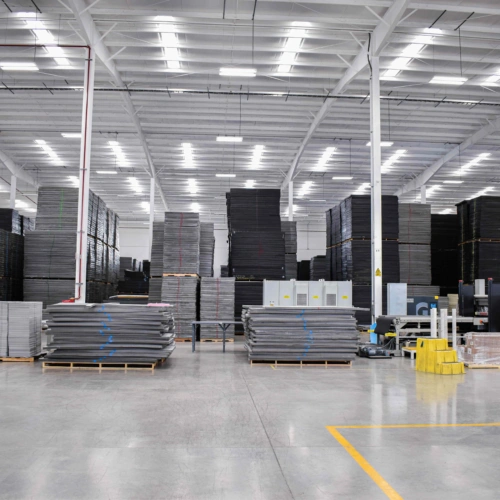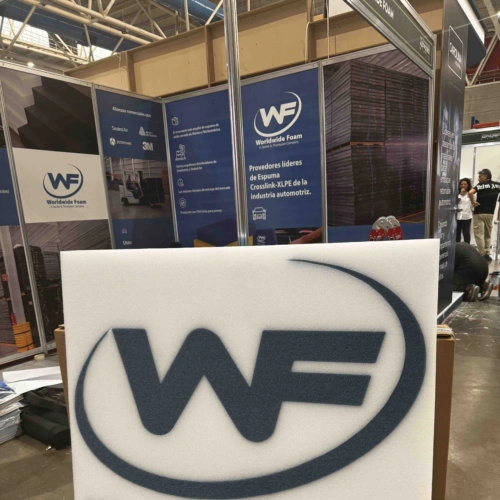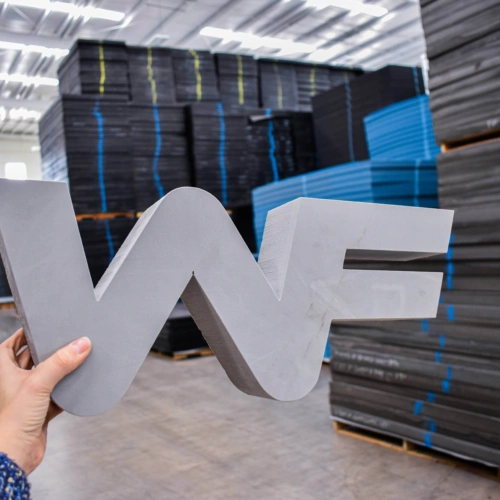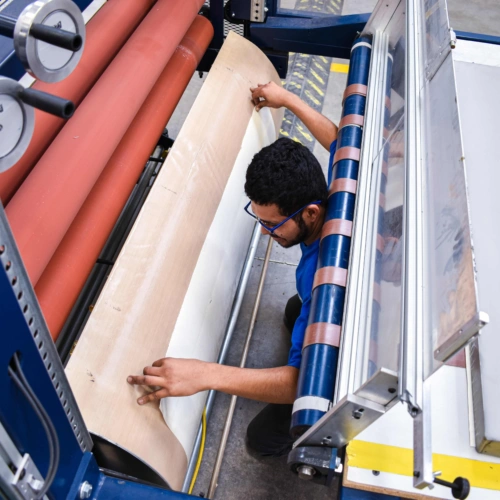| April 30, 2025
In the packaging industry, every millimeter counts. When working with materials like packaging foam, it's essential to understand how cutting tolerances affect the final product's quality.
At Worldwide Foam, we work with XLPE, extruded PE, elastomeric foam, and other high-performance materials. Due to their manufacturing processes, these materials can present certain challenges in maintaining dimensional accuracy.
Why is it important to understand cutting tolerances?
Cutting tolerances refer to the acceptable variation in the thickness or dimensions of a part from its intended specifications. For polyethylene foam, understanding these tolerances is crucial to ensuring proper protection—especially when an exact fit or precise placement within custom packaging is required.
Although our cutting processes are highly controlled, the physical properties of materials such as XLPE and elastomeric foam can result in surface irregularities and thickness variations. These deviations are not defects but natural characteristics caused by expansion, curing, or extrusion.
Common materials and their cutting behavior
Different types of packaging foam exhibit specific behaviors that impact cutting tolerances. Understanding how each material behaves during processing is key to achieving consistent and accurate results.
What factors influence cutting tolerances?
Beyond the type of foam, several factors can influence cutting tolerances:
Material density: Higher-density foams offer greater dimensional stability.
Ambient temperature: Temperature fluctuations can cause materials to expand or contract.
Blade condition: Blade wear or blade type can affect thickness consistency.
Cutting speed: Excessive speed can cause material deformation.
Compression during cutting: The pressure applied can alter the final thickness.
What standards do we follow at Worldwide Foam?
At Worldwide Foam, we adhere to standardized procedures to ensure our cutting tolerances stay within accepted industry margins. To achieve this, we:
Perform regular inspections and maintenance on cutting tools.
Use automated systems to enhance cutting consistency and repeatability.
Maintain detailed records for every production batch.
Offer technical consultation for projects requiring critical tolerances.
We’ve also developed a comprehensive technical document covering terminology, measurement methods, influencing factors, and recommended tolerances by foam type. This resource is available to customers needing precise specifications.
What if you need tighter tolerances?
If your project requires high-precision cutting, it's important to communicate this early in the process. Our technical team can help select the most suitable foam type and adjust our methods to meet your exact requirements.
We can also reduce surface irregularities and better control thickness variations through calibration, thermal adjustment, or adjustments in cutting orientation.
Reliable performance for your application
Understanding cutting tolerances in foam packaging is key to achieving reliable performance across industrial, logistics, or commercial applications.
At Worldwide Foam, we not only provide high-quality materials like buns, elastomeric foam, XLPE, and extruded PE—we also offer the technical support needed to ensure each part meets your expectations for shape, fit, and function.
If you have questions or need technical guidance, contact us today! Our team is ready to help you find the ideal foam solution for your project, with the precision it demands.
Worldwide Foam

We are leaders in the supply of closed cell polyethylene foam in Mexico. We support various industries by offering a wide range of products and complementary services.










